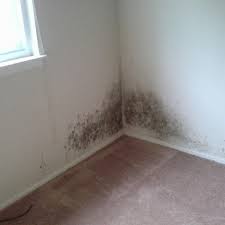 Mold Growth – San Diego CA
Mold Growth – San Diego CA
Step into a seemingly perfect home and you might not see it, but it is there – silently wreaking havoc on your health. Harmful mold growth is a problem that many homeowners underestimate or overlook entirely. This invisible threat can trigger a wide range of health issues, from mild allergies to severe respiratory problems. In this article, we delve into the dangers of mold growth and why it’s crucial to address it promptly.
Mold thrives in damp and poorly ventilated areas, making bathrooms, basements, and kitchens common breeding grounds. Its stealthy nature allows it to spread undetected behind walls, under carpets, and within hidden crevices. Not only does mold damage your property, but it also releases airborne spores that can pose serious health risks to you and your family.
We’ll explore the numerous health hazards associated with mold exposure, including allergies, asthma, and even more severe complications for those with weakened immune systems. Additionally, we’ll provide tips on how to prevent mold growth and eliminate it if it’s already present in your home.
Don’t let this unseen menace compromise your health and well-being. Join us as we uncover the dangers of harmful mold growth and learn how to protect yourself and your loved ones from its insidious effects.
Understanding the Health Risks Associated with Mold Exposure
Mold exposure can significantly impact one’s health, leading to a wide range of symptoms and complications. Inhaling or contacting mold spores can trigger allergic reactions, respiratory problems, and even more severe health issues, particularly for individuals with weakened immune systems or pre-existing conditions.
One of the primary health risks associated with mold exposure is the development of allergic reactions. Mold spores can cause the immune system to overreact, leading to sneezing, coughing, itchy eyes, and a runny nose. In some cases, mold exposure can also exacerbate existing respiratory conditions, such as asthma, causing increased wheezing, chest tightness, and difficulty breathing.
Prolonged mold exposure can also lead to more severe health problems. Certain types of mold, such as Stachybotrys chartarum (also known as “black mold”), produce mycotoxins, toxic compounds that can cause serious health issues. Exposure to these mycotoxins has been linked to respiratory infections, neurological problems, and even potential organ damage. Individuals with weakened immune systems, such as the elderly, young children, or those with chronic illnesses, are particularly vulnerable to the harmful effects of mold exposure.
In addition to the immediate health concerns, long-term exposure to mold can have lasting consequences. Studies have shown that mold exposure can contribute to the development of chronic sinus infections and increase the risk of certain types of cancer, such as lung cancer. Furthermore, mold exposure can exacerbate existing conditions, such as heart disease and Parkinson’s disease, leading to a decline in overall health and quality of life.
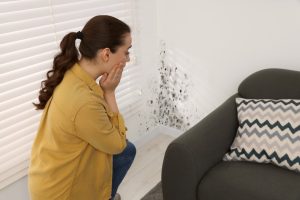
Common Signs and Symptoms of Mold Exposure
Recognizing the signs and symptoms of mold exposure is crucial for addressing the issue promptly and protecting one’s health. The most common symptoms associated with mold exposure include:
Respiratory problems: Coughing, wheezing, shortness of breath, and chest tightness are common respiratory symptoms of mold exposure. These can be especially problematic for individuals with pre-existing conditions like asthma or chronic obstructive pulmonary disease (COPD).
Allergic reactions: Sneezing, runny nose, itchy eyes, and skin rashes are typical allergic reactions to mold. These symptoms can range from mild to severe, depending on the individual’s sensitivity and the extent of mold exposure.
Headaches and fatigue: Mold exposure can also cause persistent headaches and a general sense of fatigue and lethargy. These symptoms can be particularly debilitating and impact one’s daily activities and quality of life.
Neurological symptoms: In some cases, mold exposure has been linked to neurological symptoms, such as memory loss, confusion, and difficulty concentrating. These more severe effects are often associated with exposure to certain types of toxic mold.
Immune system problems: Individuals with weakened immune systems, such as those with HIV/AIDS, cancer, or organ transplants, may experience more severe and potentially life-threatening complications from mold exposure, including respiratory infections and sepsis.
It’s important to note that the specific symptoms of mold exposure can vary from person to person, depending on the mold type, the exposure level, and the individual’s overall health and susceptibility. If you suspect mold exposure, seeking medical attention and having your home or workplace evaluated by a professional is crucial.
Identifying the Most Vulnerable Areas for Mold Growth
Mold thrives in damp, humid, and poorly ventilated environments, making certain areas of the home or workplace vulnerable to growth. Understanding these high-risk areas is essential for effectively preventing and addressing mold infestations.
Bathrooms: Bathrooms are one of the most common breeding grounds for mold due to the constant moisture from showers, sinks, and poor ventilation. Leaky pipes, improper drainage, and inadequate air circulation can all contribute to the ideal conditions for mold growth in bathrooms.
Basements and crawl spaces are prone to moisture buildup, especially in homes with poor insulation or drainage issues. Leaks, flooding, and high humidity levels can create the perfect environment for mold to thrive, often going unnoticed until the problem becomes more severe.
Kitchens: Kitchens can also be susceptible to mold growth, particularly around sinks, dishwashers, and areas with poor ventilation. Spills, leaks, and condensation can all lead to mold development if not addressed promptly.
Attics and roofs: Leaks in the roof or poor attic ventilation can allow moisture to accumulate, leading to mold growth in these often-overlooked areas. Improper insulation or ventilation can also contribute to the problem.
Walls and ceilings: Mold can grow behind walls, under wallpaper or paint, and in hidden crevices, especially in areas with water damage or high humidity. Condensation from windows, poor insulation, or leaks can all create the ideal conditions for mold to thrive in these locations.
Carpets and upholstery: Carpets, rugs, and upholstered furniture can harbor mold, particularly if exposed to water damage or high moisture levels. The fabric and padding in these items can provide a nutrient-rich environment for mold to grow.
By identifying these vulnerable areas and addressing any moisture-related issues promptly, homeowners and building managers can significantly reduce the risk of mold growth and the associated health hazards.
Prevention and Control Measures for Mold Growth
Proactive measures to prevent and control mold growth are crucial for maintaining a healthy indoor environment. Implementing the following strategies can significantly reduce the risk of mold-related problems in your home or workplace.
Improve ventilation and humidity control: Ensure all rooms, especially bathrooms, kitchens, and basements, have adequate ventilation to remove excess moisture. Consider installing exhaust fans, dehumidifiers, or improving airflow to keep humidity below 50%.
Address water leaks and moisture issues: Promptly repair leaks in roofs, pipes, or walls to prevent water from accumulating and create the ideal conditions for mold growth. Regularly inspect for signs of water damage and address the underlying causes.
Enhance insulation and weatherproofing: Proper insulation and weatherproofing can help regulate temperature and humidity levels, making it more difficult for mold to thrive. Seal any cracks, gaps, or openings that could allow moisture to enter the building.
Maintain clean and dry surfaces: Regularly clean and dry surfaces, especially in bathrooms, kitchens, and basements, to remove any moisture that could lead to mold growth. Use mold-resistant cleaning products and ensure that surfaces are thoroughly dried after cleaning or exposure to water.
Avoid using carpets and upholstered furniture in high-moisture areas: In rooms with high humidity or potential water exposure, opt for hard, non-porous flooring and furniture that are less susceptible to mold growth. If carpets or upholstery must be used, ensure they are appropriately maintained and dried quickly in case of water damage.
Educate and empower occupants: Inform building occupants about the importance of mold prevention and the steps they can take to identify and report any signs of mold growth. Encourage prompt reporting of moisture issues or mold problems to facilitate timely intervention.
By implementing these proactive measures, you can significantly reduce the risk of mold growth and the associated health hazards, creating a safer and healthier indoor environment for all occupants.
Steps to Take if you Suspect Mold in your Home or Workplace
If you suspect mold in your home or workplace, taking immediate action to address the issue and mitigate any potential health risks is crucial. Here are the steps you should take:
Identify the source of the problem: Carefully inspect the affected area to determine the root cause of mold growth, such as water leaks, high humidity, or poor ventilation. Understanding the underlying issue is crucial for developing an effective remediation plan.
Limit exposure and isolate the affected area: If you have identified mold, it’s important to limit your exposure and prevent the spread of spores to other areas. Avoid entering the affected room or space, and close off the area to prevent air circulation throughout the building.
Contact a professional mold inspector: Hire a qualified mold inspector or industrial hygienist to assess the extent of the mold growth and determine the appropriate course of action. They can perform testing to identify the type of mold present and provide guidance on the necessary remediation steps.
Develop a mold remediation plan: Based on the inspector’s findings, work with a reputable contractor to develop a comprehensive plan for addressing the mold problem. This may involve removing and disposing contaminated materials, cleaning and disinfecting affected surfaces, and addressing the underlying moisture issue.
Implement proper safety precautions: During the mold remediation, it’s crucial to take appropriate safety measures to protect workers and the occupants. This may include using personal protective equipment, such as respirators, and ensuring proper containment and ventilation of the affected area.
Monitor and verify the remediation: After the mold remediation is complete, monitor the affected area for any signs of recurring mold growth. Consider conducting follow-up testing to ensure that the mold has been effectively removed and the underlying issue has been addressed.
By taking these steps, you can effectively address the mold problem, minimize the health risks, and restore a safe and healthy indoor environment for yourself, your family, or your employees.
The importance of professional mold remediation
While addressing mold growth may seem straightforward, it’s crucial to recognize the importance of professional mold remediation. Attempting to handle mold removal without the proper expertise and equipment can lead to further complications and potentially worsen the problem.
Proper identification and assessment: Mold can take many forms, and different types of mold may require different remediation strategies. Professional mold inspectors and industrial hygienists have the expertise to accurately identify the type of mold present and assess the extent of the problem, which is essential for developing an effective remediation plan.
Containment and safety protocols: Mold remediation requires the implementation of strict safety protocols to prevent the spread of mold spores and protect the health of the occupants. Professional mold remediation contractors have the necessary training, equipment, and experience to contain the affected area properly, minimize airborne exposure, and dispose of contaminated materials safely.
Effective removal and cleanup: Mold removal is not a simple task, as it often requires the use of specialized cleaning agents, equipment, and techniques to ensure that all traces of mold are eliminated. Professional mold remediation companies have the expertise and resources to thoroughly clean and disinfect affected surfaces, removing the mold and preventing its recurrence.
Addressing the root cause: Successful mold remediation involves removing the visible mold and addressing the underlying moisture issues that led to its growth. Professional mold remediation contractors can identify and address the root causes of the problem, such as leaks, poor ventilation, or high humidity levels, to prevent future mold growth.
Compliance with regulations: Mold remediation may be subject to various local, state, or federal regulations, particularly in commercial or multi-unit residential settings. Professional mold remediation companies are familiar with these regulations and can ensure that the remediation process complies with all applicable laws and guidelines.
Warranty and follow-up: Reputable mold remediation companies often provide warranties or guarantees on their work, ensuring that the mold problem has been effectively addressed and will not recur. They may also offer ongoing monitoring and maintenance services to ensure the long-term success of the remediation efforts.
By engaging a professional mold remediation contractor, you can have peace of mind knowing that the mold problem in your home or workplace is being addressed safely, effectively, and in compliance with industry standards.
Debunking common myths about mold
Despite the growing awareness of the dangers of mold, there are still many misconceptions and myths surrounding this issue. It’s essential to separate fact from fiction to ensure that you can make informed decisions about mold prevention and remediation.
Myth: Mold is only a problem in old or poorly maintained buildings.
Fact: Mold can grow in any building, regardless of age or condition, as long as moisture, high humidity, and poor ventilation provide the necessary conditions for mold growth.
Myth: Bleach is the best solution for removing mold.
Fact: While bleach can be effective in some cases, it is not the best or safest solution for mold removal. Bleach can release toxic fumes and may not effectively kill the root structure of the mold, leading to its recurrence. Specialized mold remediation products and techniques are generally more effective and safer.
Myth: Mold is not a serious health concern.
Fact: Mold exposure can have significant health consequences, particularly for individuals with respiratory conditions, weakened immune systems, or allergies. Certain types of mold, such as Stachybotrys chartarum (black mold), can even lead to severe health problems.
Myth: Mold can be easily cleaned with household cleaners.
Fact: Mold growth often extends beyond the visible surface, penetrating into porous materials like wood, drywall, or insulation. Attempting to clean mold with household cleaners may only address the surface-level problem and fail to eliminate the underlying mold growth, leading to its recurrence.
Myth: Mold is not a problem if it’s not visible.
Fact: Mold can often grow in hidden areas, such as behind walls, under carpets, or within HVAC systems, without being visually apparent. This “hidden” mold can pose significant health risks and require professional assessment and remediation.
Myth: Mold only grows in damp or humid environments.
Fact: While mold thrives in damp, humid conditions, it can also grow in areas with relatively low humidity levels, as long as there is a consistent source of moisture, such as leaks or condensation.
By understanding and debunking these common myths, you can make more informed decisions about addressing mold problems and protecting the health and safety of your home or workplace.
Resources and organizations for further information on mold prevention and remediation
If you’re looking to learn more about mold prevention, identification, and remediation, some numerous resources and organizations can provide valuable information and guidance.
Centers for Disease Control and Prevention (CDC): The CDC offers comprehensive information on mold, including its health effects, prevention, and remediation strategies. Their website (www.cdc.gov/mold) is a reliable source for evidence-based guidance on mold-related issues.
Environmental Protection Agency (EPA): The EPA has published the “Mold Remediation in Schools and Commercial Buildings” guide, which provides detailed information on mold assessment, cleanup, and prevention. Their website (www.epa.gov/mold) is a valuable resource for homeowners and commercial building managers.
American Industrial Hygiene Association (AIHA): The AIHA is a professional organization representing industrial hygienists and other occupational health and safety professionals. Their website (www.aiha.org) offers a wealth of information on mold, including guidelines, standards, and educational resources.
Institute of Inspection, Cleaning,, and Restoration Certification (IICRC): The IICRC is a leading certification body for the cleaning, restoration, and inspection industries. It offers training and certification programs for mold remediation professionals and provides industry-specific information and standards on its website (www.iicrc.org).
Indoor Air Quality Association (IAQA): The IAQA is a non-profit organization that promotes indoor air quality and addresses related issues, including mold. Their website (www.iaqa.org) features educational resources, webinars, and a directory of certified professionals.
Local and state health departments: Many local and state health departments have resources and information on mold-related issues specific to your region. Contacting your local health department can provide valuable insights and guidance on mold prevention and remediation.
By utilizing these resources and seeking guidance from reputable organizations, you can better understand the risks of mold, implement effective prevention strategies, and ensure that any mold-related issues in your home or workplace are addressed properly and safely.
Conclusion: Taking action against mold for a healthier environment
Mold growth is an often-overlooked threat that can have serious consequences for the health and well-being of individuals and communities. From triggering allergic reactions to causing more severe respiratory problems and even potentially contributing to long-term health issues, the dangers of mold exposure should not be underestimated.
By understanding the risks associated with mold, recognizing the common signs and symptoms of exposure, and identifying the most vulnerable areas for mold growth, you can take proactive steps to prevent and address this invisible threat. Implementing effective prevention and control measures, such as improving ventilation, addressing moisture issues, and engaging professional mold remediation services, can go a long way in creating a safer and healthier indoor environment.
Remember, mold growth is not a problem that should be ignored or overlooked. Prompt action and a commitment to ongoing vigilance are essential for protecting the health and well-being of yourself, your family, and your community. By taking the necessary steps to address mold-related issues, you can enjoy a

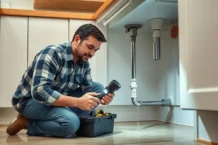
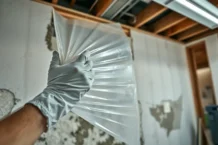
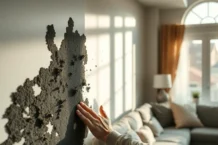

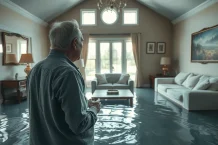
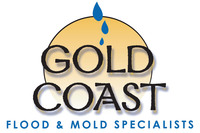


Follow Us!